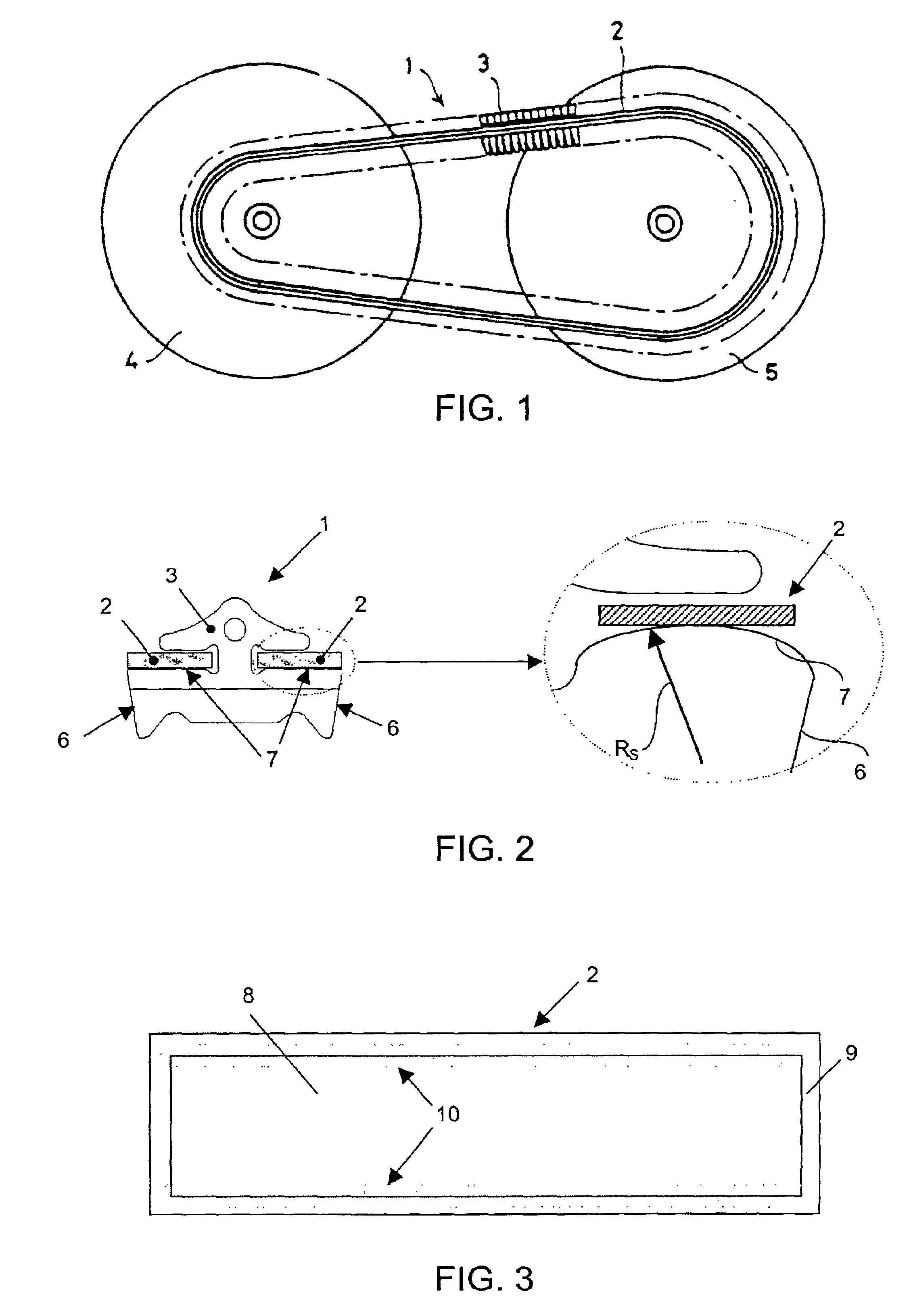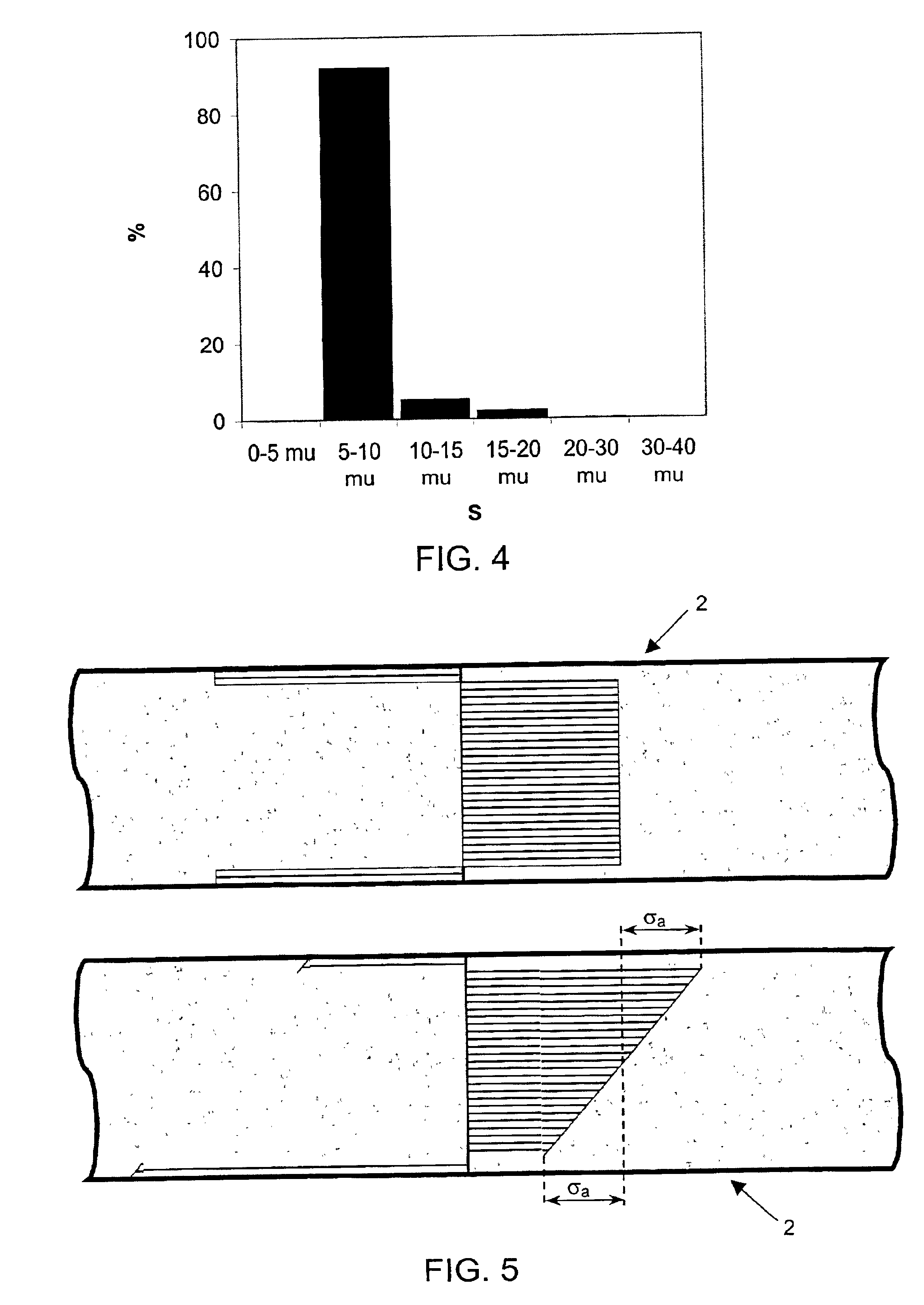Metal push belt and material therefor
a push belt and metal technology, applied in the direction of driving belts, v-belts, belts/chains/gearrings, etc., can solve the problems of unnecessarily expensive and complicated production, and achieve the effect of reducing the disadvantageous effect, good fatigue strength, and reducing the fatigue strength of a band
- Summary
- Abstract
- Description
- Claims
- Application Information
AI Technical Summary
Benefits of technology
Problems solved by technology
Method used
Image
Examples
Embodiment Construction
FIG. 1 shows schematically a continuous variable transmission (CVT) with a conveyor belt 1 which is made up of a tensile means 2 in the form of nested endless thin bands, and on which there are an endless continuous series of cross elements 3, alternatively denoted transverse elements, which slide freely there over. They move between the sheaves of pulleys 4 and 5, with steplessly variable diameter. Such a continuous variable transmission is known per se. Typical thickness of a band range from 0.15 to 0.25 mm. Typical widths of a band range from 8 to 35 millimeters. Typical circumferential lengths of a drive belt 1 range from 50 to 100 cm. For reasons of economical production and for preventing technical complexity, a belt usually runs between pulleys 4, 5 of which only one sheaf is arranged axially movable, while the other is arranged rotationally and axially fixed to an axle of rotation. This arrangement means that during operation the alignment of a belt 1 and its bands 2 deviate...
PUM
| Property | Measurement | Unit |
|---|---|---|
| diameters | aaaaa | aaaaa |
| inclusion diameter | aaaaa | aaaaa |
| inclusion diameter | aaaaa | aaaaa |
Abstract
Description
Claims
Application Information
 Login to View More
Login to View More - R&D
- Intellectual Property
- Life Sciences
- Materials
- Tech Scout
- Unparalleled Data Quality
- Higher Quality Content
- 60% Fewer Hallucinations
Browse by: Latest US Patents, China's latest patents, Technical Efficacy Thesaurus, Application Domain, Technology Topic, Popular Technical Reports.
© 2025 PatSnap. All rights reserved.Legal|Privacy policy|Modern Slavery Act Transparency Statement|Sitemap|About US| Contact US: help@patsnap.com



